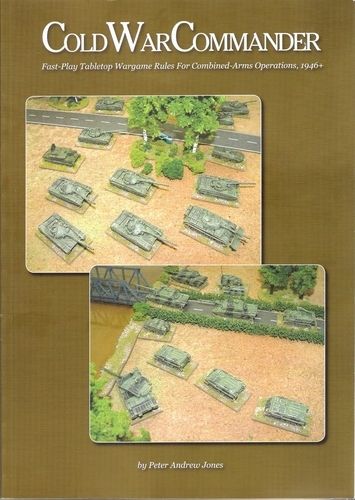Blitzkrieg Commander, Cold War Commander and Future War Commander review
Page 1 of 1
 Blitzkrieg Commander, Cold War Commander and Future War Commander review
Blitzkrieg Commander, Cold War Commander and Future War Commander review

Blitzkrieg Commander, Cold War Commander and Future War Commander review
Produced by Specialist Military Publishing, each of these rule sets are based on the same games system and have many universal rules and shared elements, therefore it seemed appropriate to review them all at the same time. The Blitzkrieg Commander rules cover the period 1936-1945 whereas Cold War Commander encompasses forces between 1946-1990.
The books themselves are nicely produced. They contain a small section of rules at the beginning of the book with full colour images spread throughout, followed by a detailed army list section at the end. As these rules are designed to be played using any company’s models and on any scale, it’s particularly helpful of the producer to provide a list of suggested manufacturers in the books to get new players started.
The game as a whole has a very simple format based around the ‘command phase’ system. For anyone who has played Warmaster in the past this concept will be very familiar. Each player takes control of a battle group which is commanded by different HQ units, who then make command rolls to issue orders to the units under their influence. This process is repeated until a command roll is failed, which can result in units being issued multiple orders each turn. The ‘command phase’ system allows the game to simulate the ‘fog of war’ effect very well and represents communications, troop and commander quality, whether good or bad. The only minor downside to this system is that games can occasionally last far longer than expected if players makes multiple command rolls each turn.
It is clear that a lot of time has been spent writing the army lists, particularly with Blitzkrieg and Cold War Commander, with well researched and detailed lists that let the gamer play forces from different nations, time periods and theatres of war. Although very detailed, they’re also very simple to understand, with standard special rules applying to all army lists. The rule sets also introduce different tactical doctrines to army lists, adding restrictions on certain units and determining the way a force plays. This allows armies to follow history accurately and almost completely removes power-gaming.
The other main feature of these games is the focus on combined arms combat. The rules and army lists allow players to make use of infantry, armour, artillery and close air support each turn to achieve their objectives. HQ units allow infantry and armour to be issued orders, whereas Air Controllers and Artillery Observers guide bombers and off-table artillery respectively. This allows a player to suppress enemy units with devastating artillery fire before armour or infantry assault a defended position.
This is a highly recommended rule set for anyone interested in 20th Century gaming, no matter what scale you prefer. Future War Commander also provides an opportunity for gamers to use Epic 40,000 models using a different and well thought out game system.
 Similar topics
Similar topics» Warhammer 40,000 Roleplay: Dark Heresy review
» A Call to Arms: Star Fleet review
» Dropzone Commander
» Dropzone Commander Scourge army now updated with UCM Army
» A Call to Arms: Star Fleet review
» Dropzone Commander
» Dropzone Commander Scourge army now updated with UCM Army
Page 1 of 1
Permissions in this forum:
You cannot reply to topics in this forum
